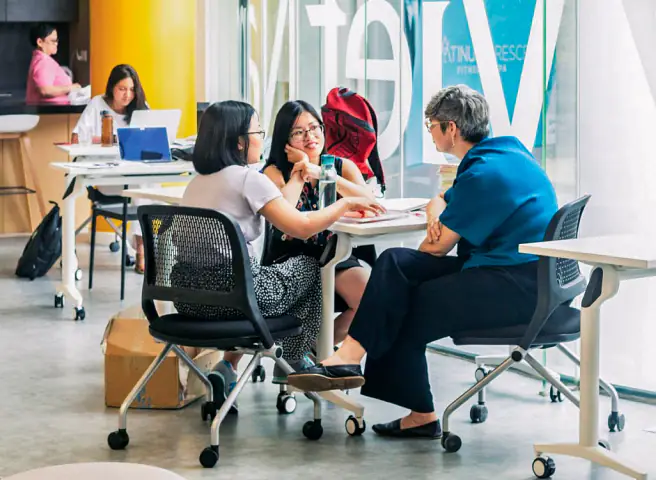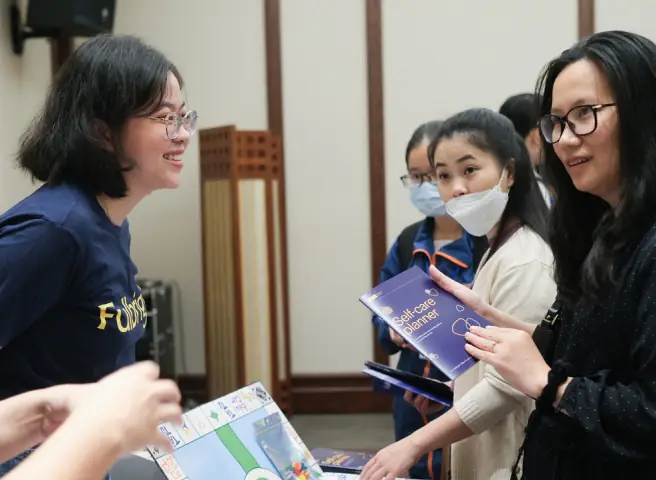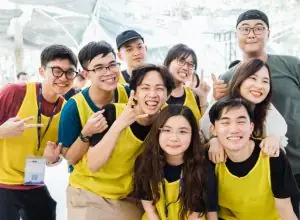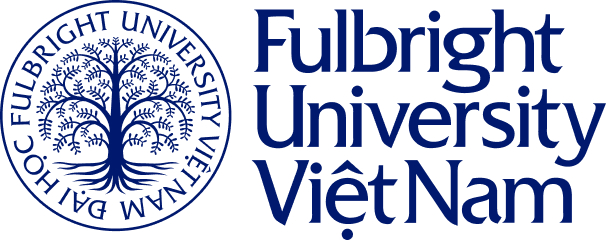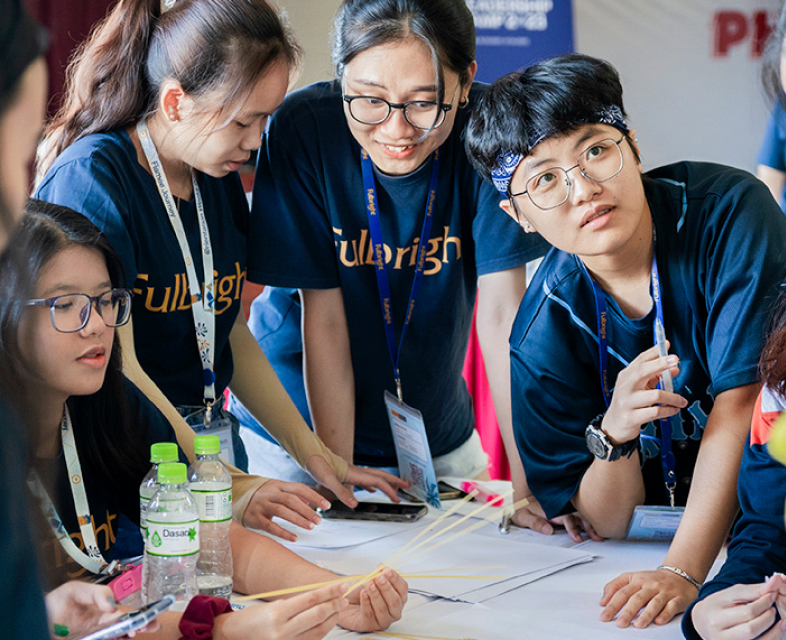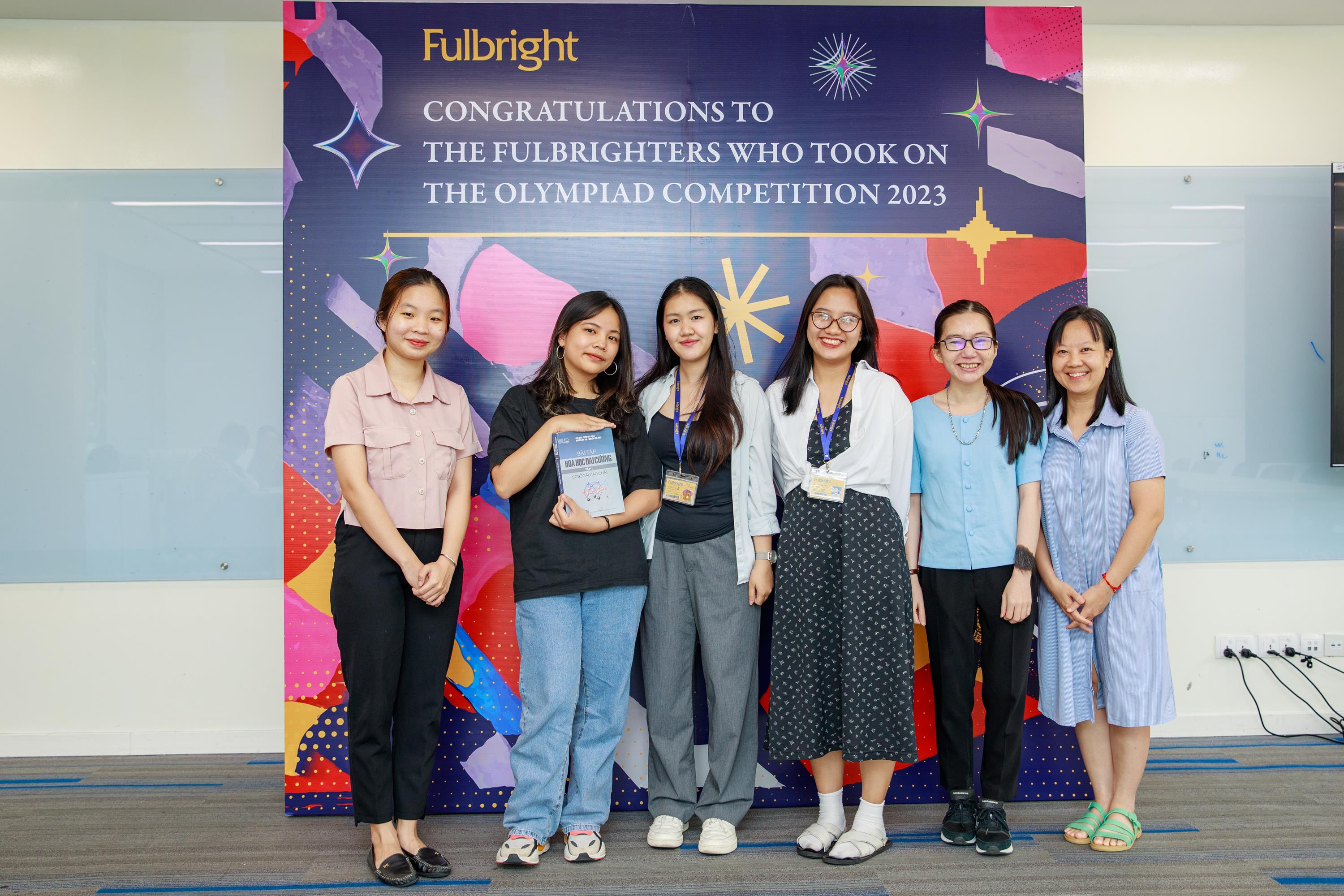
Joint efforts between the peoples of Vietnam and the United States to address the legacies of war, support higher education, and combat climate change were highlights of the second panel of a conference hosted by Fulbright University Vietnam, in coordination with the U.S. Consulate General Ho Chi Minh City, to celebrate 27 years of normalized diplomatic relations between the two countries. The event took place at the Independence Palace on August 8, 2022.
Since the normalization of diplomatic relations between Vietnam and the United States in 1995, along with the launch of our Comprehensive Partnership in 2013, the past 27 years have borne witness to a remarkable transformation of our relationship. While enduring efforts from Vietnamese government leaders and their American counterparts have deepened our ties on economic and security cooperation, education support, technology exchange and environmental issues, it has also been the collaborations between our peoples that further bolster our valued and trusted friendship. Over the years, undertakings by citizens and organizations from Vietnam and the United States have enriched our cultural understanding, supported disadvantaged and vulnerable groups, as well as empowered the next generation that represent our future.
The civilian ambassadors of peace
At the conference, Mr. Chuck Searcy, Chairman of the Vietnam branch of Veterans for Peace, remarked: “I think the general question of addressing the war legacies can be answered with compliment to the government of Vietnam for having persevered through great difficulties in the early years of the post-war relationship, and creating the conditions that would allow the U.S. and Vietnam to come back together, to become friends and work together in mutual respect.”

Now in his late 70s, Mr. Chuck Searcy has been living in Vietnam since 1998 and served as international advisor for Project RENEW, an initiative founded in 2001 by the government of Quang Tri Province and international NGOs to clean up unexploded ordnance and provide medical assistance, rehabilitation, and income generation for local victims. During the panel discussion, he recalled how, during the 1960s, the student peace movement had contributed to the nationwide protest and anti-war sentiment against American military involvement in Vietnam – and eventually, the withdrawal of American troops from Vietnam in 1975.
Mr. Searcy also recounted a meeting he had with Mr. Nguyen Ngoc Hung, a Vietnamese veteran who worked as an English teacher for high-schoolers in Vietnam after the war. In 1990, Mr. Hung was invited by CBS News to come to the U.S. for a segment on 60 Minutes; he traveled from city to city in America, speaking on behalf of Vietnamese veterans and the Vietnamese people. There was however, in one particular city, hostility and cynicism from his American audience; and yet, after they had listened to what Mr. Hung had to say – how his life and that of his friends was changed and forever altered by the war; that they were still facing problems with Agent Orange, with adjustment to post-war realities, with personal losses and sufferings – the American veterans all came down to the stage, and they embraced.
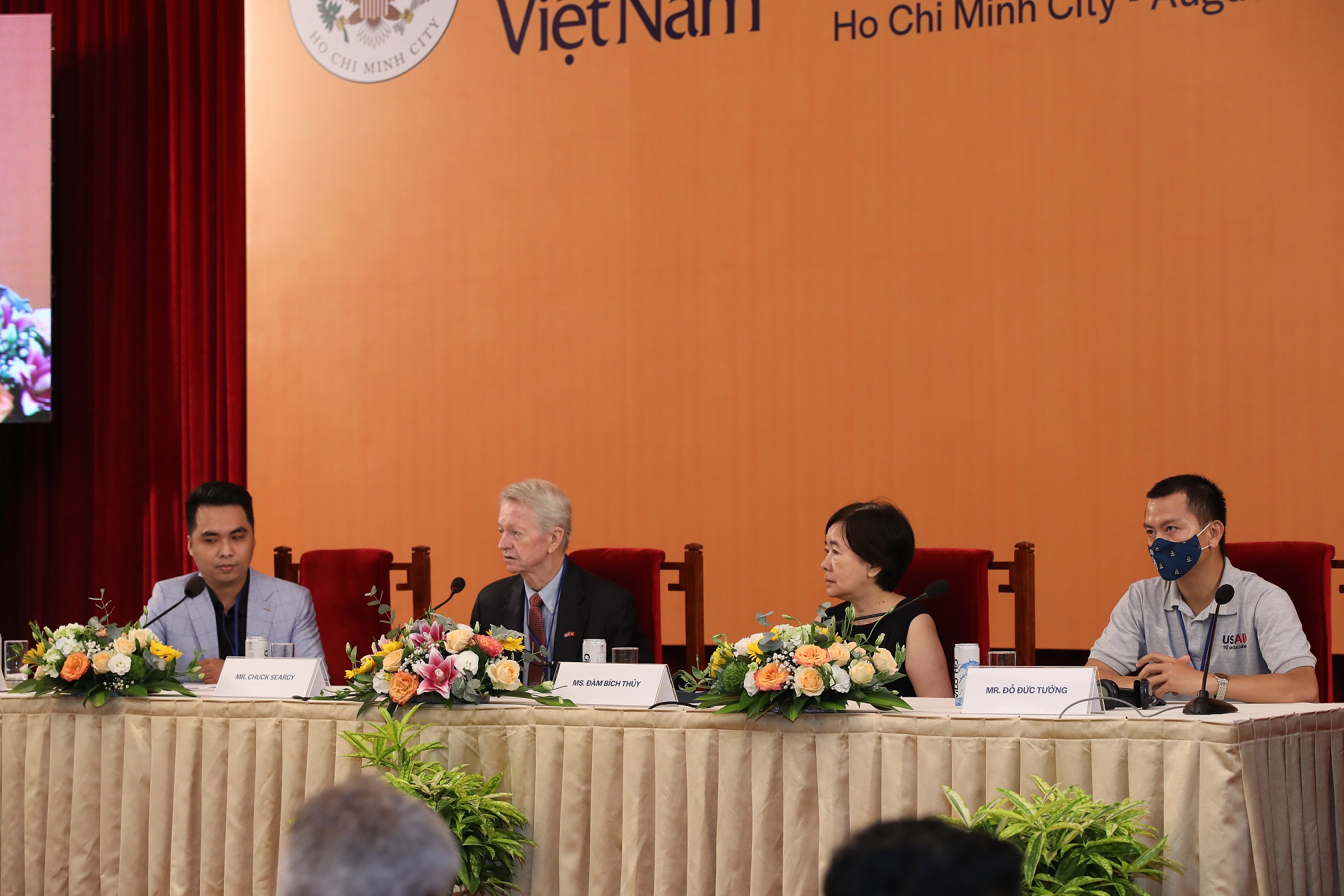
From the outset of his relocation to Vietnam, Mr. Chuck Searcy has reserved a special interest in alleviating efforts concerning the aftermath of Agent Orange. “The fact is that I and many other veterans had stated very clearly that this was a matter of justice and fairness,” he said. “And if we’re going to help American veterans and their families suffering from Agent Orange, we should do the same for the Vietnamese.” After years of denial, the U.S. government has shifted their position, and now “committed to continue our efforts to remediate dioxin and to assist persons with disabilities,” as stated by U.S. Ambassador to Vietnam Marc Knapper in his opening remarks at the conference.
Panelist Mr. Do Duc Tuong, Clean Energy Advisor at USAID Vietnam, also elaborated later on: “After completion of the Environmental Remediation of Dioxin Contamination at Danang Airport in 2018, USAID is working in partnership with the government of Vietnam to remediate dioxin contamination at Bien Hoa Air Base Area, the primary Agent Orange storage and handling site during the U.S.-Vietnam War and the largest remaining dioxin hotspot in Vietnam. It’s part of our many efforts since 1989 to support the people of Vietnam, increase resilience, and consolidate our bilateral relationship.”
Clean energy is key to our future
In partnership with the Government of Vietnam, civil society leaders, the private sector and the people of Vietnam, USAID currently manages a comprehensive portfolio in economic growth and governance, higher education, health, biodiversity/countering wildlife trafficking, support to persons with disabilities and other vulnerable populations and disaster assistance in Vietnam.

Chief among them, environmental issues and combating climate change was the focal point that Mr. Do Duc Tuong emphasized during the conference: “There remain several challenges that Vietnam needs to address before we can reach net‐zero emissions by 2050. Thanks to our elongated coastline of 3,260 km, Vietnam still possesses huge potential for accelerating the transition to clean energy regarding wind and solar power. And yet, one of the key questions here is how we can integrate, stabilize, and optimize these renewable energies into our national grid. That is why USAID Vietnam is collaborating with the National Renewable Energy Laboratory and the Massachusetts Institute of Technology in the U.S. to help facilitate our shared vision towards not only a green future for Vietnam, but also how we can empower small, local enterprises when it comes to effective employment of their resources.”
Our young people is the bridge between the past and future
While Mr. Chuck Searcy’s tireless efforts to mend our painful past are testaments of history, not to mention the fact that USAID is working on projects that tackle a wide range of contemporary societal issues in Vietnam, the growing partnership between our two peoples wouldn’t be complete without commitments made towards the future – meaning, the education of our young people.

At the conference, Ms. Dam Bich Thuy, President of Fulbright University Vietnam, remarked: “For those who still find themselves unsure of the future of Vietnam, I’d invite you to visit our university campus. It is here that you will encounter and talk to our undergraduate students, whose heart and talent and intelligence will change your mind. This is a generation that’s not only rooted in and fully appreciates many aspects of Vietnamese culture, but also well-versed and aspiring to the world out there. At Fulbright, not only do we equip our students with fundamental life skills and concentrated expertise so that they can pursue a sustainable career after graduation, but more than that, we also nurture their sense of civic virtues, or how they can and should employ their talents for the betterment of the common good.”
Ms. Dam Bich Thuy also stressed that even though Fulbright is Vietnam’s first private, not-for-profit liberal arts university – a bold vision supported by the governments, ministries and organizations of both Vietnam and the United States; not to mention the philanthropists from across the continents – the university has decisively chosen not to duplicate the programs currently run by esteemed American institutions, nor by other developed countries within the region and Europe.
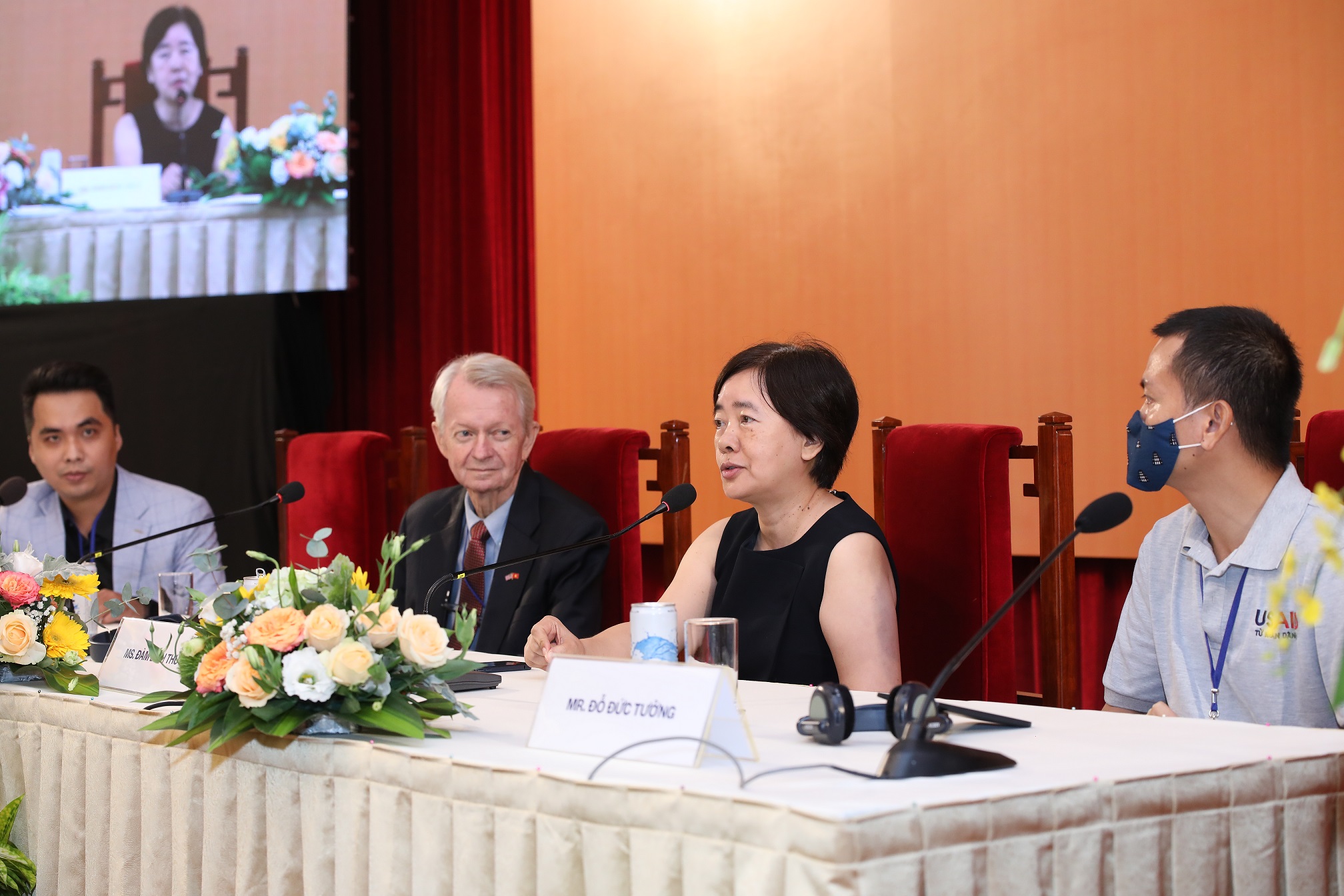
The reason, according to her: “What distinguishes the top universities in the world from the rest doesn’t come from a one-size-fit-all model that anybody can easily copy. When Fulbright set our goal to become a world-class university, we were fully aware that our efforts have to build around what’s considered our Vietnamese DNA, only then can we define our name as a credible and trusted hub for research and other academic endeavors – a voice that offers something truly unique and non-replaceable within the region and across the world.”
Since our establishment in 2016, Fulbright University Vietnam has not only been a shining example of the diplomatic partnership between Vietnam and the United States, but it has also served as a bridge that connects our young people. According to the U.S. Ambassador to Vietnam Marc Knapper: “In Southeast Asia, no country sends more students to the United States than does Vietnam. In fact, Vietnam currently constitutes the sixth largest sender of foreign students to the U.S. behind giants like India, China, South Korea.” In return, Fulbright University Vietnam has also attracted a rising crop of young Vietnamese-American scholars to come teach and conduct research on our campus, not to mention the Vietnamese graduates who have completed their Master and Doctoral Degrees overseas.
According to Ms. Dam Bich Thuy: “My past several years with Fulbright University Vietnam have convinced me that, it is none other than the investment in the education and cultural exchange of our young people that shall advance efforts of reconciliation, cultural understanding, and our deepened people-to-people ties. The future of Vietnam lies in the hands of our next generation of young people, whose talents and desires to learn, to act, and to contribute to the common good will no doubt make our visions come true, and transforming the world at large.”
Bao Quyen
